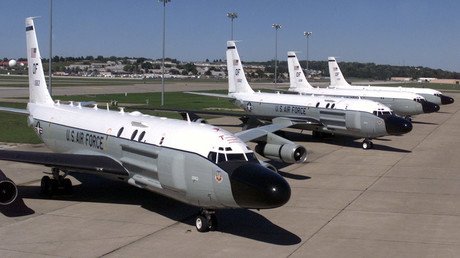Russia first to install digital cameras on Open Skies surveillance aircraft – Defense Ministry

Russia has become the first Open Skies Treaty member to install digital equipment on its two surveillance aircraft, the Defense Ministry announced.
Russian-made digital surveillance equipment installed on Tu-154M-LK1 and An-30B Open Skies fixed-wing aircraft was certified by international experts on Monday, the ministry’s statement says.
“Experts from 22 Open Skies Treaty countries have confirmed our digital surveillance equipment is fully-compliant with requirements and limitations [under the treaty],” said the head of the National Nuclear Threat Reduction Center, Sergey Ryzhkov.
The Treaty of Open Skies has been in force since January 2002, and currently has 34 signatories. Any party the treaty may conduct observation flights according to annual quota allocation. The treaty has been designed to promote transparency, trust and mutual control over the parties’ militaries, with the entire territory of a member state open to observation.
Before being approved by international experts, the digital equipment has undergone nearly 300 tests over the past three years, the ministry noted.
Digital cameras would make Russian surveillance aircraft stand out in terms of technological capabilities as the other Open Skies countries still use old-fashioned analog equipment.
The cutting-edge equipment has been certified by 64 experts from 22 countries at Russian Air Force bases outside Moscow and in Russia’s south. International experts were also allowed to do on-ground checks of the aircraft inventory and verify infrared line scanners for a day/night capability.
“This was indeed a very good trip, and it has been a success for Russia,” said Claus Bernander of Sweden’s Open Skies verification center.
Surveillance flights normally take place under agreed flight paths with no deviations or unexpected maneuvers allowed. An observation mission may be denied by a host country on flight safety reasons, but not for reasons of national security.
Russian Air Force use Tu-154M-LK1 and An-30 Open Skies-capable aircraft, with both planes being gradually replaced with two more capable Tu-214ONs.
Open Skies aircraft operated by member states might have video, panoramic and framing cameras for daylight photography as well as scanners and radars for day-night all-weather capability. Imagery resolution is limited to 30cm, but quality of photo images taken during flights generally allow recognition of major military equipment, for example, to distinguish between a tank and a truck.













